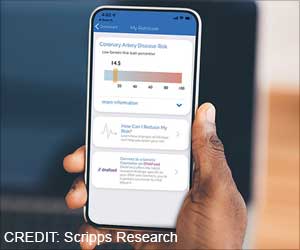Now, researchers from the University of Miami, Chinese University of Hong Kong Shenzhen, Duke University and James Madison University addressed this question by collecting photos of people’s faces when they were sick with a short-term, contagious illness, such as COVID-19, and when they were feeling healthy (fully recovered).
Building upon our previous studies in adults, researchers hypothesized that sensitivity to facial cues of sickness would emerge in childhood (4-to-9-year-olds). They predicted that this sensitivity would increase with age, reflecting a behavioral immune system that becomes fine-tuned through experience. By better understanding how people naturally avoid illness in others, they may identify what information is used and ultimately improve public health.
Advertisement
To conduct the study, children were recruited through online advertisements (such as social media) and partnerships with local organizations (such as maternity centers and museums). Adults were recruited through the undergraduate research participant pool at the University of Miami.
The study sample included 160 participants who were 4 to 5 years old, 8 to 9 years old, and adults. Participants were primarily White (70% of 4- to 5-year-olds, 62% of 8- to 9-year-olds, and 61% of adults) and not Hispanic (63% of 4- to 5-year-olds, 71% of 8- to 9-year-olds, and 80% of adults) ().
Most participants had a primary caregiver with a 4-year college degree (33% of 4- to 5-year-olds, 33% of 8- to 9-year-olds, and 42% of adults) or an advanced/professional degree (51% of 4- to 5-year-olds, 60% of 8- to 9-year-olds, and 39% of adults).
Children are Good at Detecting Illness Through Facial Cues
The study was conducted online, with child participants primarily located throughout the United States as well as in Canada and the United Kingdom. Parents, children, and adult participants were required to communicate in English and had normal or corrected-to-normal vision and hearing.
The study was completed on Zoom between August 2021 and March 2022 through child-friendly online games. The children were presented with two faces (one sick and one healthy) from the same person, side by side. In the first game, participants were to choose among faces (“Which twin would you rather sit next to at dinner?”) to assess their preference for approaching healthier people.
Participants then received a short break during which they were invited to play an unrelated find-the-ball game to prevent fatigue and increase motivation. In the second game, participants were asked to identify which person was feeling sick. Participants were told, “Imagine that you’re a doctor and you’re working inside this hospital.
In this game, it’s your job to figure out who is sick, so you can help them feel all better. Which twin do you think is the one who is feeling sick?” This question enabled the researchers to capture participants’ explicit recognition of sickness.
They found that children (8 to 9 years old) can avoid and recognize sick faces. In addition, adults were more accurate at avoiding and recognizing sick faces than 8- to 9-year-olds, who were more accurate than 4- to 5-year-olds, suggesting that these skills improve with age.
Children who were more accurate at recognizing sick faces were also more accurate at avoiding them. The findings add to a growing body of knowledge that humans are sensitive to illness in faces. To explore whether we can improve sick face perception skills and improve public health, researchers are continuing to collect sick face photos.
References:
- Ackerman, Joshua M et al. What Role Does Pathogen-Avoidance Psychology Play in Pandemics?. Trends in cognitive sciences vol. 25,3 (2021).(https://www.cell.com/trends/cognitive-sciences/fulltext/S1364-6613(20)30280-1?_returnURL=https%3A%2F%2Flinkinghub.elsevier.com%2Fretrieve%2Fpii%2FS1364661320302801%3Fshowall%3Dtrue)
- Hlay, J.K., Albert, G., Batres, C. et al. The evolution of disgust for pathogen detection and avoidance. Sci Rep 11, 13468 (2021).(https://www.nature.com/articles/s41598-021-91712-3)
Source: Eurekalert



